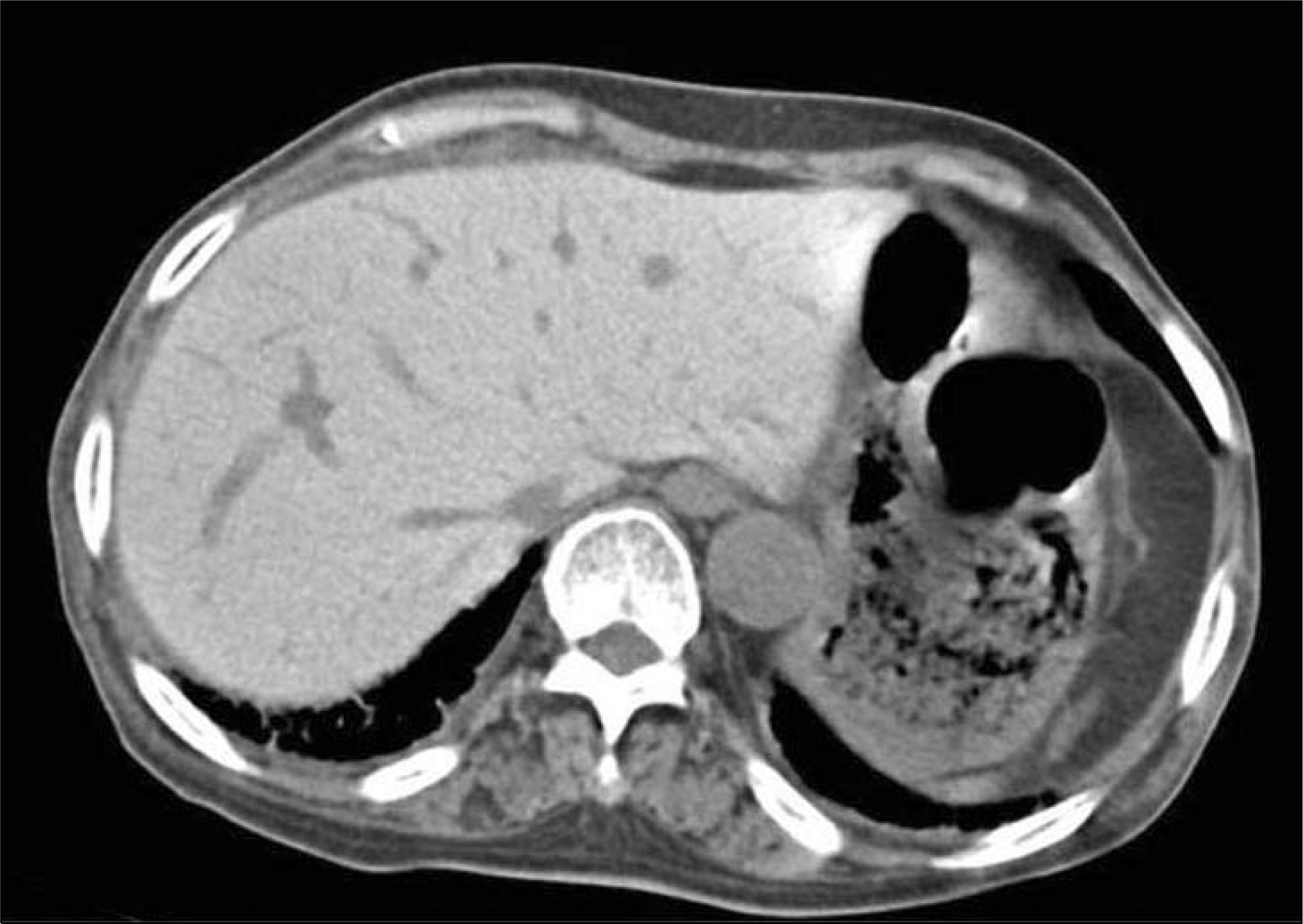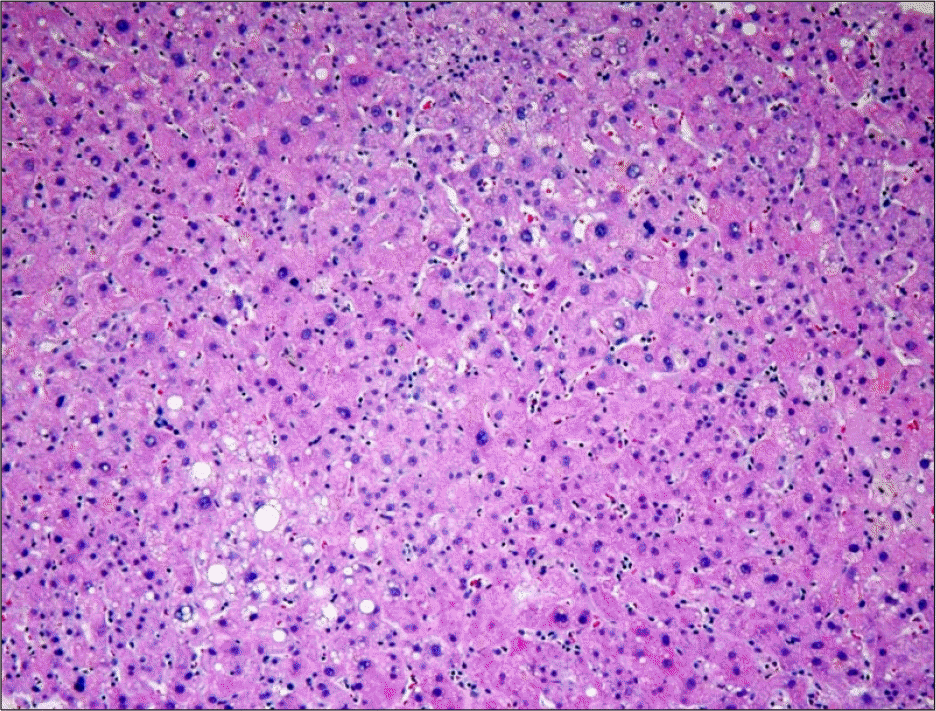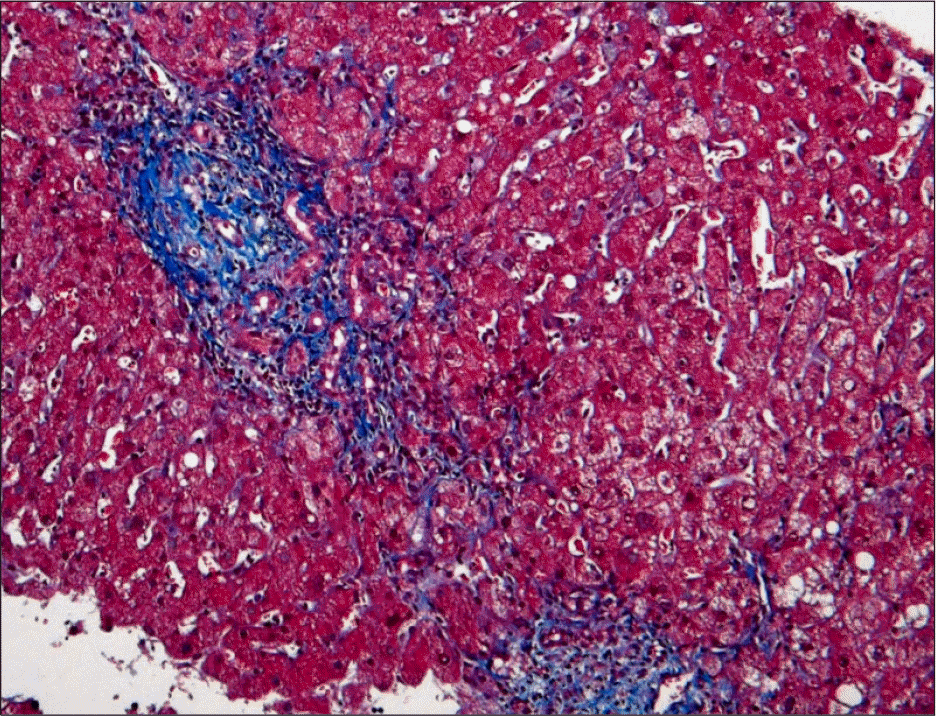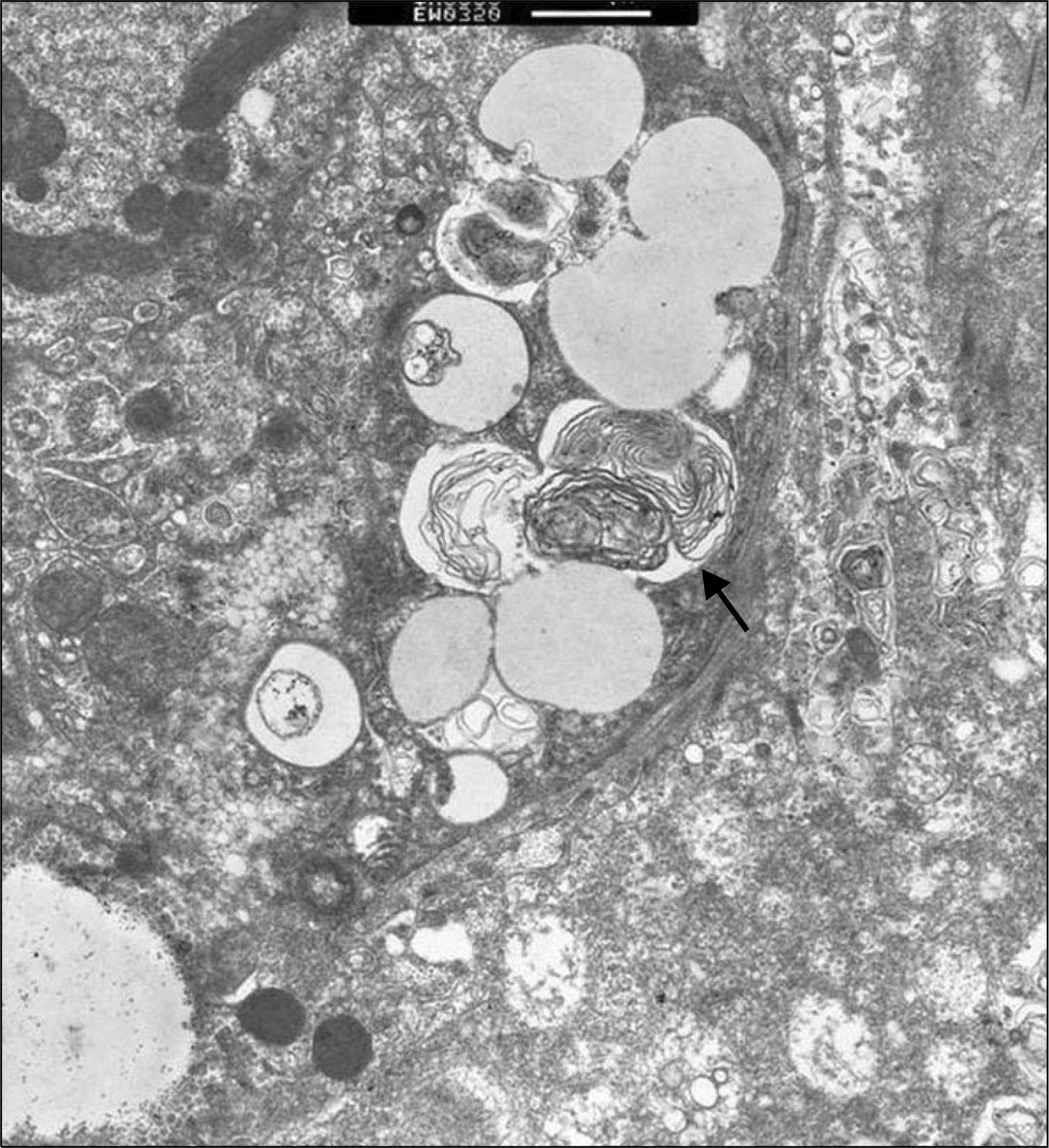Abstract
Amiodarone is a di-iodated benzofuran derivative that is commonly used to treat patients with various cardiac arrhythmias. It is associated with side effects that involve the liver, thyroid, and other organs. Approximately 1–3% of patients treated with amiodarone suffer from symptomatic liver disease. Thyroid dysfunction occurs in 10% of patients treated with amiodarone. A 65-year-old woman with coronary heart disease and atrial fibrillation was administered with amiodarone. She developed nausea, vomiting, dyspepsia, and sweating within 9 months of amiodarone administration (200 mg orally once a day). Results of the laboratory finding showed increased hepatic enzymes, and low thyroid hormone levels. A liver biopsy showed irregular arrangement of hepatocytes and diffuse micro- and macrovesicular fatty changes. Electron microscopy findings showed pleomorphic mitochondria with crystalloid inclusions and membrane-bound lysosomal structures. The liver and thyroid functions returned to normal, after the amiodarone was stopped. We describe an unusual case in which amiodarone induced hepatitis and hypothyroidism simultaneously. Physicians should take a close look to the adverse event when using amiodarone which can cause adverse effects in multiple organs.
References
1. Gassanov N, Caglayan E, Erdmann E, Er F. Amiodarone-induced liver dysfunctions. Dtsch Med Wochenschr. 2010; 135:1372–1374.
2. Lewis JH, Ranard RC, Caruso A, et al. Amiodarone hepatotoxicity: prevalence and clinicopathologic correlations among 104 patients. Hepatology. 1989; 9:679–685.

3. Kang DY, Jin SY. Drug induced hepatitis mimicking alcoholic hepatitis. Korean J Hepatol. 2006; 12:574–578.
4. Raja K, Thung SN, Fiel MI, Chang C. Drug-induced steatohepatitis leading to cirrhosis: long-term toxicity of amiodarone use. Semin Liver Dis. 2009; 29:423–428.

5. Shong MH, Yi KH, Cho BY, et al. Amiodarone-induced thyrotoxicosis. Korean J Intern Med. 1991; 41:854–858.
6. Jin SW, Yoon HJ, Lee JM, et al. Incidence of amiodarone-induced thyroid dysfunction in Korean. Korean J Med. 2003; 64:664–669.
7. Puli SR, Fraley MA, Puli V, Kuperman AB, Alpert MA. Hepatic cirrhosis caused by low-dose oral amiodarone therapy. Am J Med Sci. 2005; 330:257–261.

8. Verhovez A, Elia F, Riva A, Ferrari G, Aprà F. Acute liver injury after intravenous amiodarone: a case report. Am J Emerg Med. 2011; 29:843. e5-e6.
9. Jin SY. Alcoholic hepatitis. Korean J Hepatol. 2006; 12:243–246.
10. McCarthy TC, Pollak PT, Hanniman EA, Sinal CJ. Disruption of hepatic lipid homeostasis in mice after amiodarone treatment is associated with peroxisome proliferator-activated receptoralpha target gene activation. J Pharmacol Exp Ther. 2004; 311:864–873.
11. Capraro J, Thalmann S. Amiodarone and thyroid. Ther Umsch. 2011; 68:309–313.
Fig. 1.
Pre-enhanced abdominal computed tomography findings. The scan showed diffuse high attenuation in the liver parenchyma.

Fig. 2.
Light microscopic liver findings. Irregular arrangement of hepatocytes and micro- and macrovesicular fatty changes (H&E, ×100).





 PDF
PDF ePub
ePub Citation
Citation Print
Print




 XML Download
XML Download